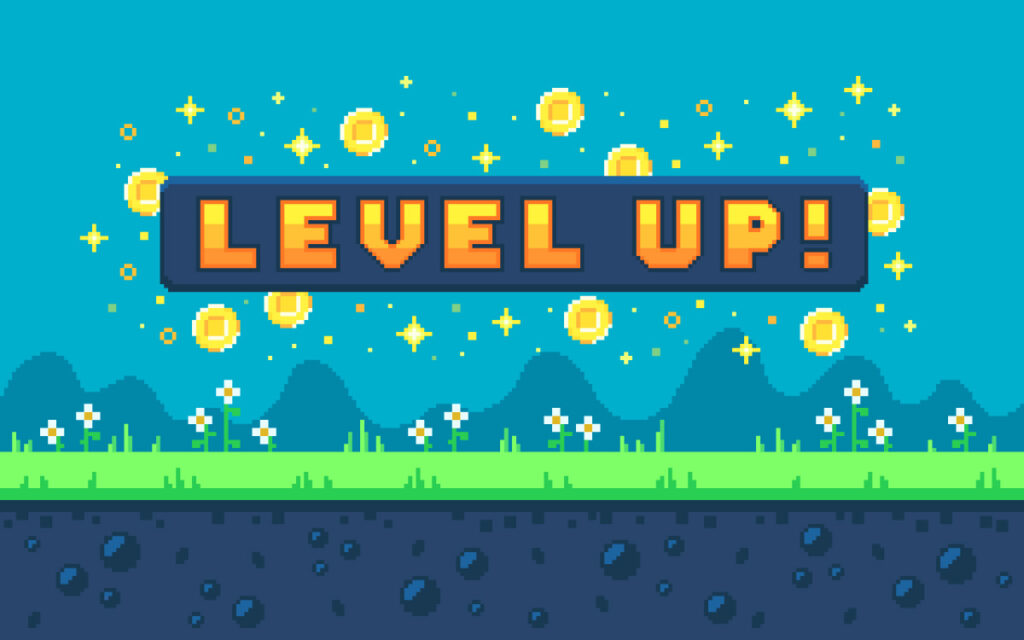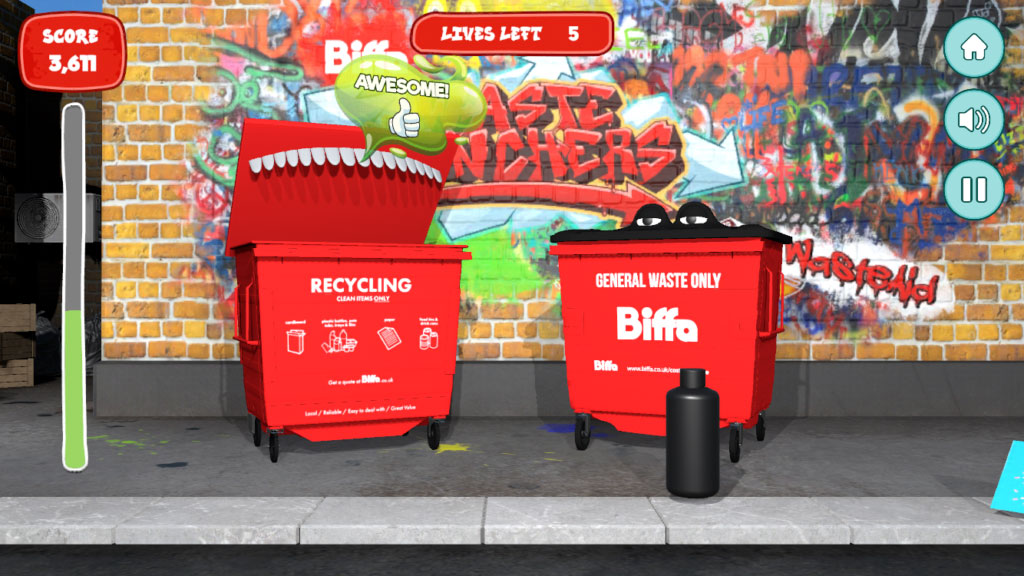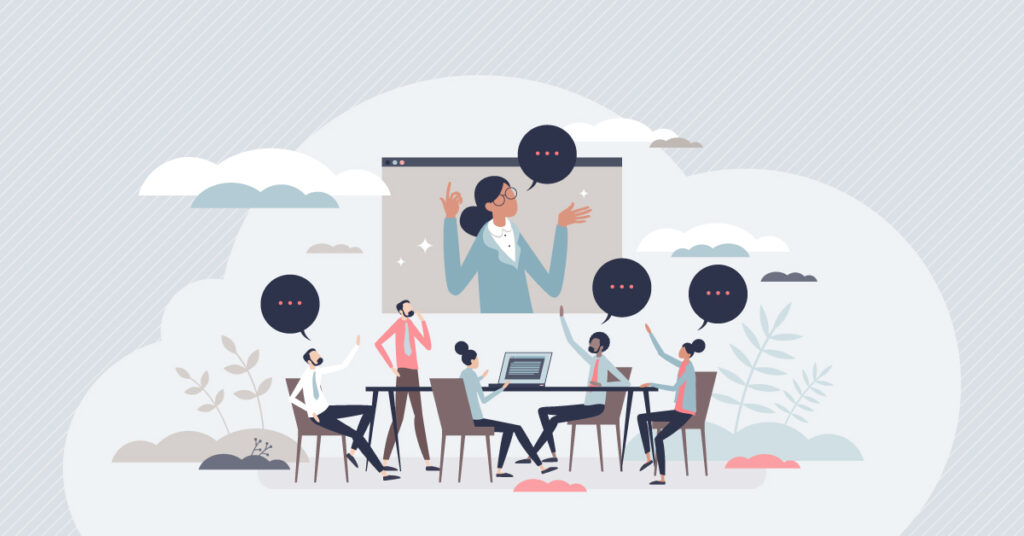No matter your sector or industry, engaging your users is the first step on the path to success; fail to inspire, captivate and arrest people, and any subsequent efforts to make sales (or even be noticed) will be in vain – or, at least, significantly hindered. Our modern world is populated by human beings, consumers and employees alike, who expect to be engaged by their digital experiences.
Incorporating gamification elements into marketing, training and workflows is one way that companies seek to achieve sustained engagement, and reward their users with something inherently fun. Gamification can take many forms, such as:
- A badge of completion
- A sense of achievement after completing a task
- A customisable avatar to embody your efforts
- A community of other users with whom you can connect and socialise
At Sliced Bread Animation, a London-based studio specialising in engaging and immersive experiences, we’re closely acquainted with gamification, from staff training to a service marketing perspective. So if you ask us whether gamification increases engagement, we’d answer ‘yes, definitely.’ To give you a closer look under the hood, though, we put together this blog. We’ll explore gamification and user metrics, and provide you with the empirical evidence to back it all up.
What is Gamification?
Gamification is the application of game-design elements – mini-challenges, trophies, playable characters, leaderboards, skill levels and so on – into non-gaming contexts. It is the introduction of game-like activities that solve problems and yield vital engagement.
Let’s take an example: you’re a company CEO who, cognisant of the fact that promoting internally is more cost-effective than hiring new staff, is interested in up-skilling your current staff. But before team members are qualified enough to warrant a promotion, they need to acquire a particular set of skills. With everyone already working so hard, how can you incentivise your employees to actively seek those new skills?
One answer is through gamification. You could work with a digital animation studio to develop a playable, game-like, digital sandbox, focussed on your company culture and featuring various mini-games and quizzes. Each employee would have their own customisable character, and would participate in challenges that feel like a game, but simultaneously teach valuable skills in a compelling and original way.
Another example might be in marketing. Perhaps you’re a CMO, aiming to boost engagement in online communities in an effort to increase brand awareness and sales. You could add a gamification feature to your website, where browsers, shoppers and consumers are invited to play simple-yet-exciting, brand-centric games, increasing user engagement and creating an atmosphere of positivity and fun around your services.
Gamification Benefits for Business
Gamification has demonstrated itself to be a breakthrough for user engagement, with future research set to bolster its implementation. Aside from increased engagement, some other key benefits include:
- Boosted motivation
- Strengthened customer loyalty
- Information retention
- Accelerated upskilling
- More emotive, engaging learning experiences
- Streamlined onboarding
- Interactive training processes
Why Do User Engagement Metrics Matter?
Engagement can be thought of as currency in a low-attention economy. It matters because it shows how closely the experiences you offer align with your goals.
When measuring user engagement with online experiences, there are a number of important metrics you should aim to identify. From there, you can work out where the best opportunities lie in terms of implementing gamification strategies and rewarding users with a more exciting experience.
- Conversion rate: This measures the percentage of people who complete the desired action. In market research contexts, conversion rate (CR) is often seen as the foremost KPI when assessing campaigns.
- Net Promoter Score: NPS, or Net Promoter Score, is essentially a measure of customer loyalty; more specifically, how likely a customer is to recommend your brand. People talk to their friends and family about the brands they intuitively ‘get’, so a high NPS is an indicator that your users understand and relate to your brand.
- Session time/ Average session duration: If users are alienated, disengaged or bored by an experience, they’ll seek alternative activities to occupy their minds. Distractions become increasingly attractive; this would show that they feel no direct engagement with whatever the task may be. Conversely, if users are captivated, they can enter a mental state of ‘flow’, where they actively participate in the activity for a prolonged period. Sustained engagement is an extremely positive sign for training or work-related tasks.
- Sessions: Your page views, or sessions, are considered by many to be a fundamental metric of the digital world, where so many competing interests exist. Essentially, sessions show the number of instances of a user visiting a page.
- Bounce rate: BR, on the other hand, is almost the complete opposite. BR measures how many users leave a page after a short time, or after visiting only that one page. A high BR indicates very low engagement. Your company may be operating a comprehensive search strategy that performs well in SEO terms, for instance, but if the landing page experiences an above-average number of bounces, it may be time to see if gamification techniques can lead to positive significant effects on engagement.
So… Does Gamification Increase Engagement?
The short answer is: yes, absolutely. Virtually any gamified system, if properly designed and targeted, taps into positive psychology that dramatically helps to engage users.
Research literature – albeit a relatively young field – demonstrates that when users process information via game design elements, they retain and recall it far more easily. It works similarly to virtual reality experiences; gamified experiences allow us to immerse and interact. This complements our brain’s natural hardwiring, and as such, we organically form emotional connections to that information.
Part of the secret behind this phenomenon lies in the power of visuality. Humans are, overwhelmingly, visual creatures – 90% of the information transmitted to the brain is visual, and we process images 60,000 times faster than text (The Power of Visuals). It stands to reason that any information presented to us in terms of images, colours and shapes will be routed to the brain more effectively – and when that information is interactive, as in a game, the process is only strengthened.
There’s also the storytelling aspect to consider. Whether through nurture or nature, or more likely a combination of both, our brains seek narratives. Intuitively, we understand and engage with information when it is conveyed in terms of a story – humans are emotional and social creatures, and so any task or activity is much more likely to capture our imagination in a story format, than in a bland wall of text.
Through gamification, users demonstrate increased engagement because of this three-way interchange between interactivity, visuality, and storytelling.
Gamification Increases User Engagement: The Evidence
At the head of this article, we promised you the science of gamification, and science necessitates evidence. Suffice it to say, the idea that gamification increases engagement is not unsupported – quite the opposite. Medical internet research throws up a number of studies, journals, use cases and investigations that fully examine gamification’s effects.
Here, we’ve collected a sample of the literature and evidence currently available.
- Does Gamification Work?
This study by Hamari, Koivisto and Sarsa suggests that gamification “indeed, does work, but some caveats exist.” Chief among them is that the positive effects are closely tied to the studied relationship between gamification and express outcomes, and so more far-ranging research is recommended to explore tangential benefits.
- Does gamification increase engagement with online programs?
Looyestyn et. al. conducted a study with 10,499 participants in tertiary education contexts. Both the intervention of distraction, as well as key engagement metrics, were measured. The study found that gamification, when it targeted tertiary education students, can often boost engagement and enhance related outcomes.
- Does gamification affect brand engagement and equity?
Hamari further investigated downstream outcomes related to gamification in 2020. Specifically, how gamified elements relate to brand loyalty, and whether users demonstrate engagement with isolated activities, or the organisation behind the game. The study concluded that “achievement and social interaction-related gamification features were both positively associated with emotional, cognitive and social brand engagement.”
- Does gamification engage users in online shopping?
An eCommerce-focussed paper in Spain discussed gamification specifically as a standardised form developed specifically to improve online buying habits. Gamification – in this context, “a system of reputation points that forms a consistent construct” – did indeed exert a positive influence on engagement. The authors recommend expanding critical appraisal processes to include other applications of gamification, such as in online educational courses.
- The Neverending Dance of Happiness
Not strictly a research paper, but the results were too impressive not to include. In partnership with Coca-Cola, we developed an online dance game where users share progress, make connections and earn points, with opportunities to win merchandise, festival tickets and experiences. All avatars were fully customisable and the game utilised Maya-rendered 3D flash assets. Even by the sky-high marketing standards of Coca-Cola, the game was a massive hit, attracting almost 500,000 active users in its first few weeks.
Gamify Your Project with Sliced Bread
Fundamentally, whatever shape it takes, gamification uses concepts of video games and game mechanics to fulfil a goal. Impressively, the fact that gamification positively impacts engagement and downstream behaviours is supported in virtually every situation to which it is applied.
Finances Online, for instance, report that 83% of employees who participate in gamified training are more motivated at work. Companies can also see an increased customer engagement, with the Texas bank Extraco seeing a rise in conversion rate from 2% to 14%, and a 700% uplift in customer acquisition.
Are you thinking about a project that uses game-based mechanics for customer engagement or employee motivation? Feel free to get in touch with us today, for a free chat about the project.













